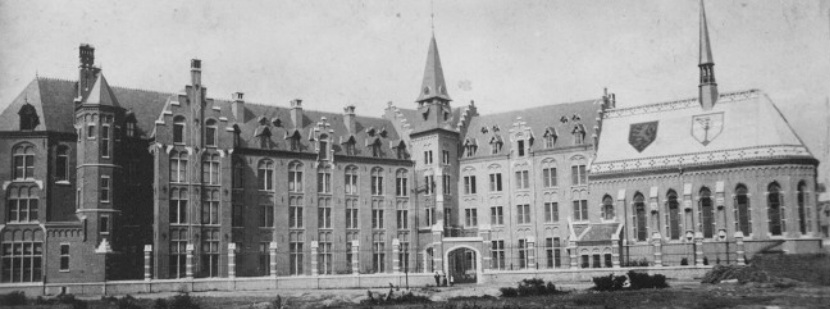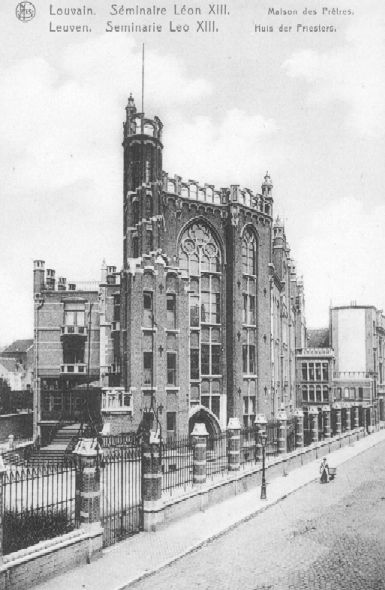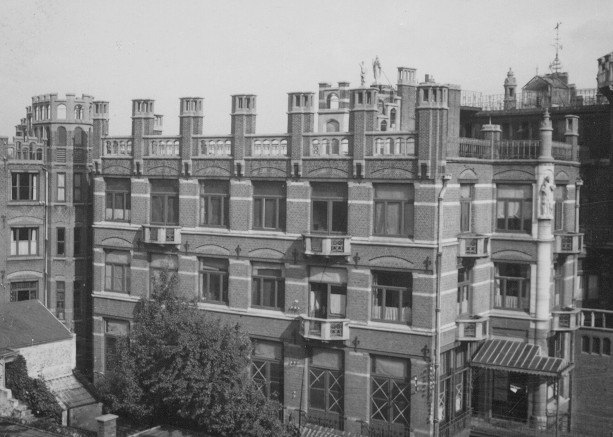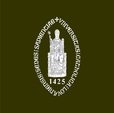History of Leo XIII seminary
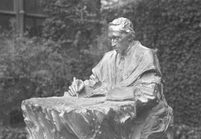
Urged by Pope Leo XIII, Désiré Mercier founded the Higher Institute of Philosophy in 1889. He moved in to a house in the Vlamingenstraat with a few seminarians that came to study at the Institute, that house was the first Leo XIII seminary. There soon was a need for more spacious housing as seminarians were sent to Leuven from al Belgian dioceses and from foreign countries as well; either to study philosophy or to do a bachelor in literature or sciences, finished with a baccalaureate in philosophy.
Famous professor-architect Joris Helleputte designed the neo-gothic block of buildings, that has two wings giving out to the Vesaliusstraat, a left wing ending on a staircase tower and a right wing with a chapel, in 1892. He directed the construction of the left wing himself from 1895 to 1896. After that his fellow worker Jean-François Piscador took over the construction of the second wing. This happened in close deliberation with the inspiring priest-professor Armand Thiéry, who royally financed both the construction of the Institute as the construction of the Seminary with his family capital. Piscador built the “House Saint John the Apostle”, on the corner of the Tiense- and the Vesaliusstraat, on request of Thiéry in 1899. The academic printing office Wamy was located there (which explains the current name “house Wamy”) and the secretarial office of the Belgian Lourdes pilgrimages. Next to that, in 1899 the Saint-Francishouse in the Tiensestraat was renovated for the Sisters that were working in the Seminary. Thiéry had Piscador build an extension for the seminary in 1900-1902. This extension was located on a small strip of land behind the House Saint John the Apostle at the Vesaliusstraat: the Holy Heart House. Two years after that, in 1904, Thiéry and Piscador built the Saint Anne House with the gateway of the seminary in the Tiensestraat, with next to that a book shop (which would later be the caretaker’s house) and above it rooms for priests-professors of the Higher Institute for Philosophy. And finally Piscador, still working for Thiéry, built the Saint Joseph House in 1908. This house was a connection between the Saint Anne and the Holy Heart House and it had a theatre, a refectory for the seminarians and a refectory and rooms for the professors.
|
In 1941 the left wing of the main building was enlarged with about forty rooms for seminarians at the side of the Vesaliusstraat. This happened under the presidency of Louis de Raeymaecker. Between 1955 and 1960 president Gerard Verbeke built a supplementary professor house at the right side of the entrance in the Tiensestraat, he enlarged the refectory of the seminarians and made a new refectory for the professors above it and he added a recreation room and new rooms at the garden side of the main building, as the number of seminarians was still growing (at that time, they were about 120).
Until 1964-1965 Leo the XIII seminary offered housing solely to student-priests (Belgians and foreigners) and to priest-professors of the Higher Institute of Philosophy. From 1965-1966 onward the new wing of the seminary at the Vesaliusstraat was partly transformed into a boys dorm (the Vives college). On the first of October 1975 the “Vives” was closed down and on the 30th of January 1976 it was handed over to the Department of Pedagogical Sciences (together with most part of the recreation room of the seminary and the classes adjoining). At the time of this distribution there were still forty student rooms at the disposition of the seminary. Because of the small number of seminarians that year (14 in total) the directorate of the seminary was compelled to rent a few of the rooms. It was considered obvious to make them available for candidate-priests and (layman) students. From the beginning the first concern was that the admittance of these students would do no harm to the specific character of the seminary as a house of education for future priests. In the end the number of candidate-priests kept dropping which explains why the seminary only has secular students today and why it has become a Christian student hostel. |

